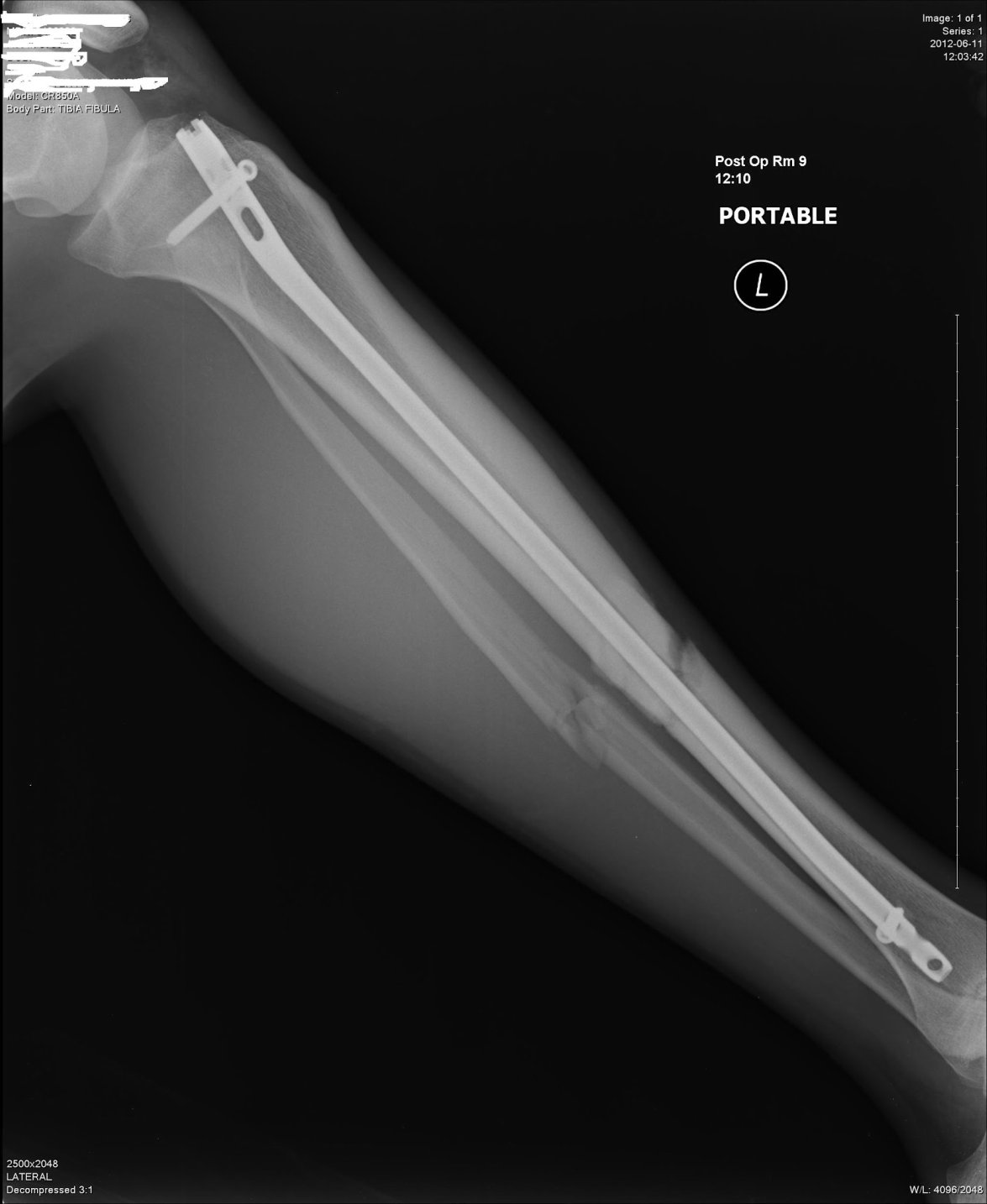
Other symptoms of a fractured tibia and fibula include:
Tibia and fibula fracture skin#
Closed fractures (the skin remains intact) often have bruising associated with them as key symptoms. If the fracture is open (the skin is broken) there may also be bleeding. Intense pain will be the initial symptoms that you will experience as a result of a fractured tibia and fibula. What are the symptoms of a fractured tibia and fibula?

It can also occur from a direct blow to the lower leg or a fall from height causing a fracture. How does a fractured tibia and fibula happen?Ī fractured tibia and fibula is usually caused when the leg is fixed to the floor and becomes twisted. Finally, to learn more about this service, read this article about fracture and injury care.Above: Rolling soft tissue massage applied to the gastrocnemius muscle by experienced therapist This is a new option for patients who would like to avoid the emergency room if they have suffered a fracture or soft tissue injury. Make an appointment by calling (904)JOI-2000. JOI Physicians are currently offering ASAP Fracture care. For JOI Rehab Appointments, please call 90. In conclusion, our goal is to return our patients to their normal activities of daily living.
Tibia and fibula fracture full#
Therefore, full recovery time of a tibia/fibula fracture takes between 3 and 6 months. Swelling will decrease, and the patient is eventually able to weight bear and walk normally fully. Throughout the course of physical therapy, ankle mobility, strength, and balance improve. Decreased ability to put weight into the affected limb.Decreased ROM and strength in the ankle or foot.It’s important to know that each surgeon’s protocol is individualized to their own restrictions based on the healing phase or surgery performed.ĭuring the physical therapy evaluation, the physical therapist will likely find the following musculoskeletal impairments in the patient: As a result, the fracture or phase of the healing process will determine if a patient will either be non-weight bearing, partially weight-bearing/toe-touch weight-bearing, or full weight-bearing. Physical Therapy after Tibia and Fibula FracturesĪfter surgery, physical therapy will begin as soon as the surgeon decides. For more severe and unstable fractures this procedure is the choice of the surgeon. External Fixation: Bone fragments are held in alignment and screws or pins support the leg from outside.Intramedullary Nailing: A rod is placed into the medullary cavity of the bone with nails screwed to the 2 ends of the bone to stabilize the fracture.Closed Reduction: The bone is realigned without making an incision at the site of injury.Open Reduction and Internal Fixation (ORIF): Consist of moving the broken bone fragments back into the original position, held in place by a metal plate held by screws.Common surgeries consist of the following: Surgery for a Tibia and Fibula FractureĪll open fractures will require surgery. Oblique fractures are typically unstable and can shorten. Usually, spiral and transverse fractures are stable enough for a cast. When a fracture is stable, casting may be recommended. X-Ray image of a tibial fracture Treatment: Surgery vs. Other symptoms include extreme tenderness, swelling, numbness due to artery or nerve damage, and bruising. With a tibial fracture, it’s highly unlikely the individual will be able to bear weight. If the fibula is only fractured, depending on severity, walking may be tolerable but likely very painful if it’s at the ankle level. Often there is a deformity present in the limb or a wound where the bone protrudes through the skin. Those with tibia and fibula fractures have severe pain at the location of the injury. Elderly individuals with osteoporosis can easily suffer fractures with falls or other mishaps. Others are non-contact forces on the ankle, such as severe inversion (foot rolling in). Some include trauma from a high fall, contact sports, or vehicle accidents. Several causes can attribute to tibia and fibula fractures. Of the two bones, a fracture is more common in the tibia. Comminuted: Fracture breaking into 3 or more pieces.Spiral: A fracture that resembles a spiral encircling the bone like stripes on a candy cane.Transverse: The fracture line is horizontal.Closed fractures occur when the bone breaks, but the skin remains intact. Open fractures occur when the bone penetrates through the skin or if a wound is formed and the bone is visible.

Two main categories of fractures are open and closed.


 0 kommentar(er)
0 kommentar(er)
